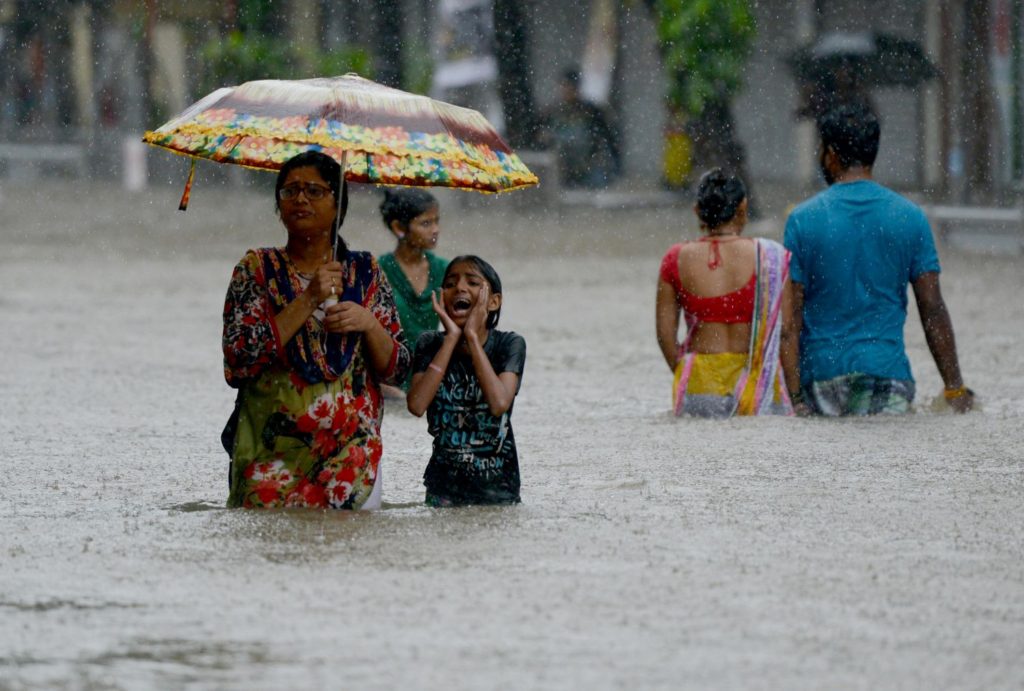India’s monsoons, particularly in the city of Mumbai, have long been a cornerstone of the country’s climate. These heavy rains traditionally provide the water necessary for agriculture and replenishing water sources. However, increasing global temperatures have begun to transform these once life-giving rains into devastating floods.
A stark illustration of this transformation occurred in the summer of 2020 from June -Septermber according to the Guardian, when intense monsoon rains inundated Mumbai, leading to catastrophic flooding that resulted inmany fatalities. The city’s infrastructure was severely impacted, with countless homes and businesses destroyed, and critical services like transportation and healthcare disrupted.
What makes this event particularly concerning is its alignment with climate change predictions. As global temperatures rise, the atmosphere can hold more moisture, leading to more significant and frequent heavy rainfall events. In addition, warmer ocean surfaces, especially in the Indian Ocean, provide more energy and moisture to monsoons, increasing their potential intensity.
Thus, the 2020/2022 Mumbai monsoon flooding appears to be part of a broader trend of more extreme and unpredictable rainfall patterns, likely driven by climate change. The increased frequency and strength of these monsoons pose considerable risks, as the 2020/2022 event demonstrated.
On November 12th, 2022, BBC Mumbai correspondent, K Subagunam, reported that seven years after the lethal floods that claimed over 400 lives in the south Indian metropolis of Chennai, the region is now enduring intense rainfall patterns that are becoming increasingly challenging to forecast. The question arising is whether the city is adequately prepared to confront the impacts of these altering climatic trends.
In that week particularly Friday, saw heavy rains lash Chennai, leading to a second shutdown of schools and colleges in November. Residents trudged through the murky floodwaters that inundated the streets and residential sectors of this coastal city with a population of 12 million. In the face of predictions of further substantial rainfall in the imminent days, the authorities remain on high alert.
K Subagunam, noted further that Just ten days prior, on the 1st of November, the city noted its most severe rainfall in over three decades. This downpour has occurred a mere fortnight after the recorded 31st October downpour that has been implicated in at least 26 fatalities. The concerning observation is that these rainfalls are not just increasing in frequency but also displaying unpredictability, thus complicating timely response from authorities.
Dr S Janakarajan, the president of South Asia Consortium for Interdisciplinary Water Resources Studies, stated, “No one could have envisaged Chennai receiving 140mm of rainfall within a 24-hour period right at the commencement of the monsoon season earlier this month. This was an unforeseen meteorological occurrence where the forecast evolved from morning to evening.”
In an attempt to manage the situation, state authorities deployed motor pumps to drain waterlogged regions and dispatched relief squads to the inundated neighbourhoods. However, as sea levels surge and heatwaves become more intense, experts caution that the city must undertake more substantial measures to lessen the impacts of such extreme weather events in the future and to prevent a recurrence of the disastrous 2015 floods.
SA Haris Sultan, a representative of the city-based anti-corruption organisation Arappor Iyakkam, expresses concern, stating, “The fact that water intruded into residences at the very start of the monsoon season exposes just how ill-prepared Chennai is at this juncture.”
One key impact is on human lives and health. In addition to the immediate risk of drowning during floods, survivors often face threats from waterborne diseases and lack of clean drinking water. Displacement is also a significant concern, as individuals and families may lose their homes, leading to increased rates of homelessness and forcing many into crowded shelters, where the risk of disease transmission is high.
Infrastructure is another major concern. Roads, bridges, and buildings are not designed to withstand the kind of extreme flooding seen in the 2022/2022 Mumbai floods. This can lead to widespread structural failures, making rescue efforts more difficult and slowing down recovery and rebuilding efforts.
Agriculture, a vital part of India’s economy, is also at risk. While monsoons traditionally provide much-needed water for crops, extreme rainfall can lead to damaging floods that wipe out entire fields, leading to food insecurity and economic hardship for farmers.
Finally, there’s the economic cost. Repairing damaged infrastructure, providing emergency relief, and supporting displaced individuals requires significant funds. These floods can drain local and national resources, diverting funds away from other critical areas.
Addressing these challenges will require both mitigation and adaptation strategies. Mitigation efforts should focus on reducing greenhouse gas emissions to slow down global warming and, by extension, limit the intensification of monsoons.
Adaptation strategies, on the other hand, should aim to enhance resilience to more potent monsoons. This might involve improving infrastructure to better withstand floods, developing early warning systems, and implementing effective evacuation plans. It’s also essential to invest in healthcare and social services to support affected communities during and after these events.
The 2020 Mumbai monsoon floods serve as a warning of the potential impacts of climate change on India’s monsoons. It underscores the urgency of addressing global warming and preparing for more extreme weather events. Without significant action, events like the 2020/2022 Mumbai floods may become increasingly common, with severe implications for people, infrastructure, and the economy.

